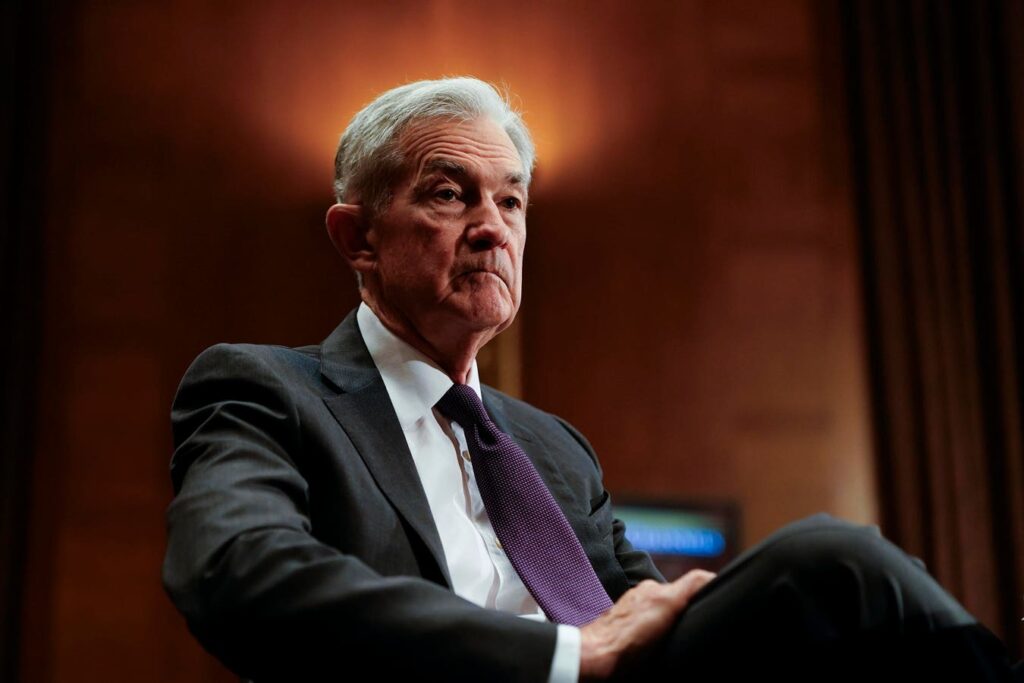WASHINGTON, DC – JUNE 25: Federal Reserve Chairman Jerome Powell testifies before the Senate Committee on Banking, Housing, and Urban Affairs during a hearing to “examine the Semiannual Monetary Policy Report to the Congress” on Captiol Hill on June 25, 2025 in Washington, DC. Powell says that the central bank will wait for clearer economic signals on the effects of President Donald Trump’s tariffs on the economy before cutting interest rates, despite pressure from the President and divisions among Fed officials. (Photo by Kent Nishimura/Getty Images)
Getty Images
Fixed income markets expect the Federal Open Market Committee to cut interest rates on Wednesday. Further cuts are expected at subsequent meetings on Oct. 29 and Dec. 10, according to the CME FedWatch Tool.
The FOMC’s September meeting should provide insights as to how policymakers see rates moving later in 2025 and beyond.
Why Interest-Rate Cuts Are Expected
Recent jobs data has been sluggish, especially in the context of recent downward revisions. That jobs outlook is likely enough for the FOMC to lower interest rates because interest rates are currently seen as relatively restrictive. Somewhat offsetting that, inflation remains closer to a 3% annual rate than the 2% FOMC target. For example, reported annual headline inflation through August was 2.9% with a notable rise in food prices, according to the Consumer Price Index.
However, maintaining employment is an important part of the FOMC’s mandate, so as risks to the labor market are potentially rising, interest-rate cuts are expected to help bolster U.S. employment over time. Of course, the FOMC will continue to monitor inflation, but in recent months unemployment has risen as a risk for the U.S. economy and so may become more of a priority for policymakers. For example at the prior meeting decision on July 30, the FOMC wrote that, “labor market conditions remain solid”, and they may now revise that assessment in light of recent data releases.
An Update To The Summary of Economic Projections
FOMC policymakers will update their Summary of Economic Projections at the September meeting. This includes a specific forecast for where interest rates will end 2025, and will offer clues as to whether policymakers are aligned with markets’ expectation for short-term interest rates ending the year around 3.5%.
It will also be notable to view the updates on where policymakers see long-term rates. That’s because interest rates may now be moving down from a relatively restrictive level to a more neutral position. However, opinions among economists and policymakers differ on where a neutral interest rate for the U.S. economy is. Often longer-term interest rate forecasts provide some insight as to where the neutral rate is estimated to be.
Fed Independence
Another major issue has been President Trump’s ongoing criticism of Fed Chair Jerome Powell and the Trump administration’s attempts to remove Federal Reserve Governor Lisa Cook. For now, these public efforts against Fed officials do not appear to have affected decision making for monetary policy, though the president has made it clear he wants lower interest rates.
In the past, Powell has avoided much discussion of the issue at his news conferences held after monetary policy decisions. However, as the pressure appears to be increasing, it will be notable if Powell elects to discuss the issue in greater detail.
Potential Dissents
The FOMC’s last meeting saw two policymakers call for lower rates, despite rates being held steady by the majority decision of the committee. Stephen Miran may be confirmed to a Federal Reserve position by the Senate ahead of the September FOMC meeting, though the timing is tight. If so, markets will be watching to see if Miran pushes for a deeper cut in interest rates than the anticipated 25 basis point reduction.
In addition Christopher Waller and Michelle Bowman, who both dissented at the prior meeting might also call for deeper cuts this time based on weaker labor market data. Since decisions are made by the majority, this may not impact the September decision, but three dissents at a meeting would be unusual.
What To Expect
The FOMC is expected to cut interest rates on September 17 with a string of further subsequent cuts viewed as probable by fixed income markets. The September meeting should provide insight as to whether that forecast will hold.



